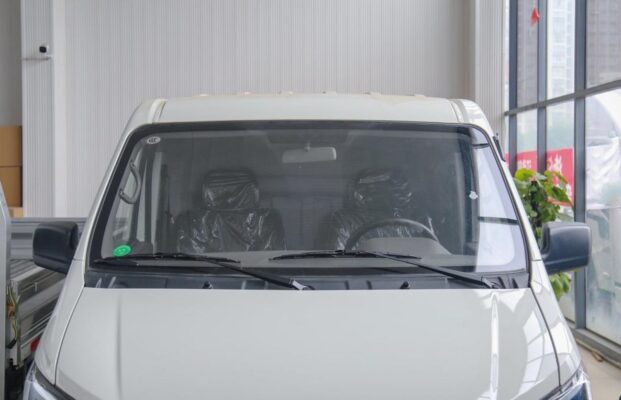The parking brake of medium-sized vehicles is typically drum-type, often fixed at the rear of the transmission housing and operated by a mechanical control mechanism. Common faults associated with the parking brake include:

(1) The parking brake fails. The primary causes for this failure are an excessive gap between the friction plate and the brake drum, the presence of oil on the friction plate and the brake drum, severe wear of the friction plate with exposed rivets and surface hardening leading to slippage. It could also be due to significant wear of the parking brake pivot pin, an overly large gap, or an overly long adjustment of the parking brake lever. Consequently, before driving and utilizing the vehicle, it should be inspected and adjusted to ensure that the parking brake control can hold the vehicle stationary on a 28% slope or prevent the vehicle from starting in second gear.
Byvoorbeeld, if the gap between the friction plate and the brake drum is too large, the braking force generated will be insufficient to effectively stop the vehicle. The oil on the friction plate and brake drum reduces the friction coefficient, further compromising the braking performance.
(2) The parking brake control lever cannot be fixed. When applying the parking brake, upon pulling the parking brake control lever to the braking position and releasing it, it fails to remain fixed at the braking position. During the inspection, initially, press and release the control lever head, grip and release the control lever handle, and conduct up and down movement tests to determine if the control lever is bent, stuck, or if the spring is broken. If no such issues are identified, check whether the ratchet teeth and pins are severely worn, causing tooth slippage.
A malfunctioning control lever or a worn ratchet mechanism can prevent the parking brake from being engaged properly, posing a significant safety risk.
(3) Abnormal noise. While driving a diesel vehicle, a “clattering, clattering” impact sound emanates from the parking brake. Stop the vehicle and conduct an inspection. Manually swing the parking brake to check if the fixing screws are loose, the control lever is deformed, the fixed pivot pin is loose, or the control lever spring is damaged. Carry out timely repairs and adjustments. If no problems are found in these aspects, inspect whether the dust shield collides with the brake drum due to deformation or insecure fixation. If a “swishing, swishing” friction sound is heard, and after driving for a certain distance, touching the surface of the brake drum with your hand reveals it to be hot. This indicates that the gap between the friction plate and the brake drum is too small and requires readjustment. Generally, there should be a gap of 0.2 to 0.4mm.

Now, let’s explore some additional aspects related to parking brake malfunctions and their possible solutions:
Another common issue could be a spongy or soft feeling when applying the parking brake. This might indicate air in the brake lines or a problem with the brake fluid. Bleeding the brake lines to remove the air and ensuring the brake fluid is at the correct level and in good condition can often resolve this problem.
In some cases, the parking brake might engage unevenly, causing one side of the vehicle to hold better than the other. This could be due to a misalignment of the brake components or a difference in wear between the left and right sides. Inspecting and adjusting the brake components on both sides to ensure symmetry can correct this imbalance.
If the parking brake fails to release completely, it can cause increased fuel consumption and abnormal tire wear. This could be caused by a stuck mechanism or a problem with the return spring. Thoroughly inspecting and lubricating the moving parts can help ensure smooth release.

It’s also important to note that regular maintenance and inspections of the parking brake are crucial for preventing malfunctions. This includes checking the wear of the friction material, inspecting the cables and linkages for damage or stretching, and ensuring that all mounting points and fasteners are secure.
During maintenance, it’s advisable to clean and lubricate the moving parts of the parking brake to reduce friction and wear. Any damaged or worn components should be replaced promptly to maintain the reliability of the parking brake system.
Verder, environmental factors can also affect the performance of the parking brake. Exposure to extreme temperatures, moisture, or corrosive substances can accelerate the deterioration of the brake components. Taking measures to protect the parking brake from these elements, such as parking in a covered area when possible, can extend its lifespan.
Ter afsluiting, being aware of the common malfunctions of the parking brake and taking prompt and appropriate corrective actions, along with regular maintenance, is essential for ensuring the safety and reliable operation of medium-sized vehicles. By addressing these issues promptly and maintaining the parking brake system properly, drivers can have greater confidence in the vehicle‘s braking performance and overall safety.